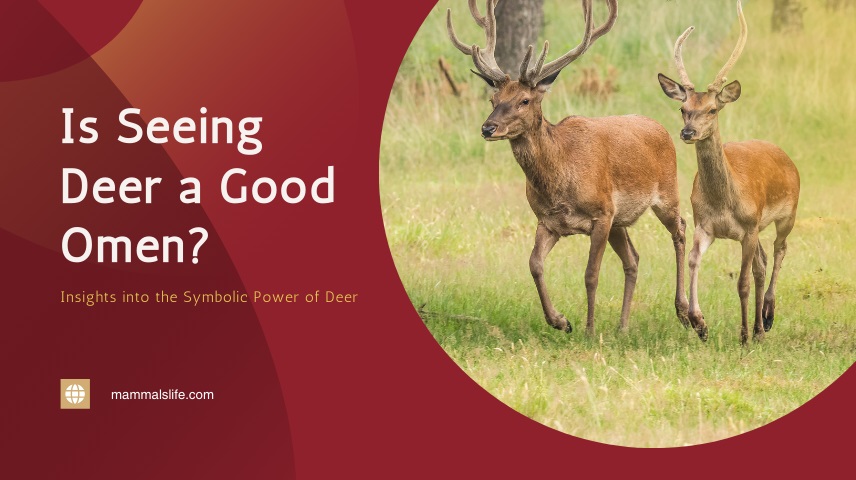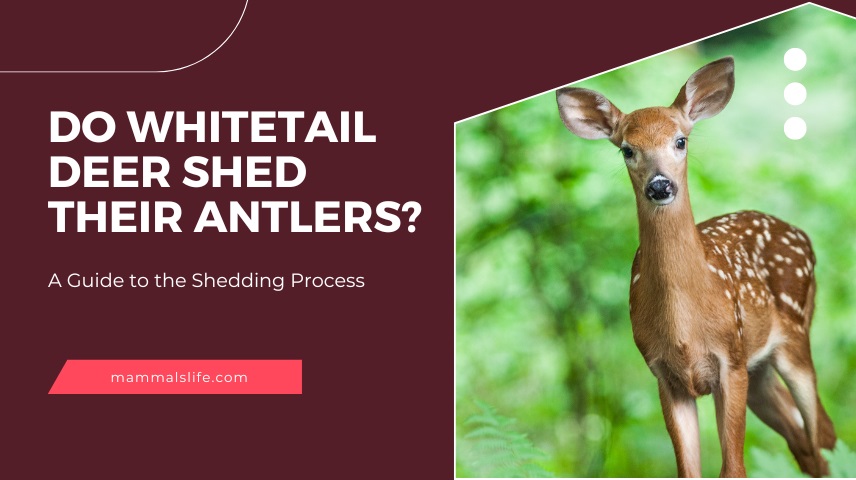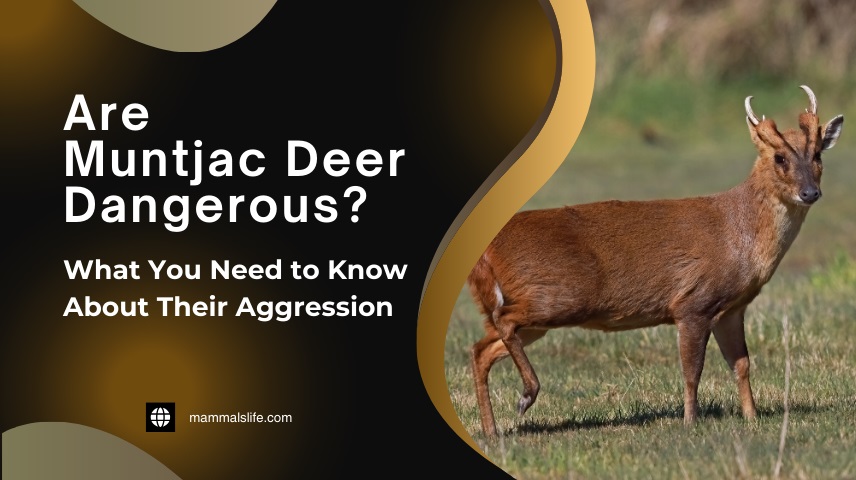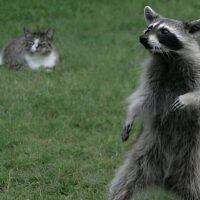Last Updated on February 22, 2025 by Mammals Life
Deer wag their tails to communicate with other deer and signal potential danger. Tail wagging also helps in social bonding.
Deer are fascinating creatures known for their unique behaviors. One such behavior is tail wagging. This action serves as a vital communication tool among deer. By wagging their tails, they alert others to potential threats, ensuring the safety of the herd.
Tail wagging can also indicate a deer’s emotional state or help in social interactions. Understanding these behaviors provides insight into how deer navigate their environment and maintain social structures. Observing tail wagging can offer valuable clues about deer communication and behavior, enriching our knowledge of these graceful animals.
Tail Wagging In Deer
Deer use their tails to communicate. Tail movements tell other deer important information. This behavior fascinates many nature lovers. Understanding why deer wag their tails helps us appreciate their world more.
Introduction To Tail Movements
Deer have a variety of tail movements. Each movement means something different. A raised tail can signal danger. A wagging tail might show calmness. These movements help deer stay safe and connected.
Deer also use their tails to ward off insects. This simple action keeps them comfortable. The tail is a vital tool for deer communication and survival.
Common Scenarios
Deer wag their tails in many situations. Here are some common scenarios:
- Danger: Deer raise their tails to warn others of predators.
- Calmness: A slow wagging tail shows the deer is relaxed.
- Insects: Quick wags help deer get rid of pests.
Each scenario highlights the importance of tail movements. Deer use these signals to interact and survive.
| Scenario | Tail Movement | Meaning |
|---|---|---|
| Danger | Raised tail | Warning of predators |
| Calmness | Slow wag | Relaxed state |
| Insects | Quick wag | Removing pests |
Read More – How to Keep Deer Out of Garden: Tips And Tricks from Experienced Gardeners
Communication Signals
Deer use their tails to communicate with each other. Their tails send different signals. These signals help them survive in the wild.
Alerting To Danger
When a deer senses danger, it wags its tail. This wagging is a warning signal. Other deer see the wag and become alert. They know there might be a predator nearby. The tail movement is quick and noticeable. It helps the group stay safe.
A deer might also flash the white underside of its tail. This is another danger signal. The flash is easy to see from a distance. It tells other deer to be cautious. These signals help deer avoid threats and stay alive.
Social Interactions
Deer also wag their tails during social interactions. A gentle wag can mean the deer is relaxed. It might be a sign of friendly behavior. This helps deer bond with each other.
During mating season, bucks may wag their tails to attract does. The tail movement can indicate interest. It is a way to communicate readiness to mate. These social signals help deer find mates and form groups.
Fawns might wag their tails to get attention from their mothers. This helps them stay close and safe. The tail wagging is a key part of their communication.
| Tail Signal | Meaning |
|---|---|
| Quick Wag | Danger Alert |
| White Flash | High Alert |
| Gentle Wag | Relaxed State |
| Tail Wag during Mating | Interest in Mating |
| Fawn Tail Wag | Attention from Mother |
Read More – Can You Use a Drone to Recover Deer? Pros And Cons of Drone-Assisted Deer Recovery
Mating And Reproductive Behavior
Deer exhibit fascinating behaviors during mating season. These behaviors ensure successful reproduction. Their tails play a vital role in communication.
Courtship Displays
Male deer engage in courtship displays to attract females. These displays include antler rattling and foot stomping. The males also wag their tails to signal readiness.
Female deer respond to these displays. They evaluate the strength and health of the males. A vigorous tail wag can indicate a strong, healthy male.
Attracting Mates
Deer use their tails to attract mates. A wagging tail can signal fertility. Both male and female deer use this signal.
The tail movements are often accompanied by other behaviors. These include vocalizations and scent marking. Together, these signals help deer find suitable partners.
| Behavior | Description |
|---|---|
| Courtship Displays | Includes antler rattling and foot stomping. |
| Tail Wagging | Indicates readiness and attracts mates. |
| Vocalizations | Used to communicate with potential mates. |
| Scent Marking | Helps in identifying and attracting mates. |
Understanding these behaviors can offer insights into deer communication. This knowledge helps in wildlife conservation and management.
Read More – Do Deer Mourn Their Dead? Examining the Evidence of Mourning in Wildlife
Predator Evasion
Deer are often prey for many predators. They have developed unique behaviors to survive. One such behavior is tail wagging. This action serves multiple purposes in predator evasion.
Distraction Techniques
Deer wag their tails to distract predators. The sudden movement can confuse a predator. It gives the deer a split second to escape.
Distraction can be a life-saving tactic. A predator may focus on the moving tail. This gives the deer a chance to flee.
Group Coordination
Deer live in groups called herds. Tail wagging helps with group coordination. It serves as a signal to other deer.
When one deer senses danger, it wags its tail. This alerts the rest of the herd. The herd can then take action to avoid the predator.
Here are some ways deer use tail wagging for group coordination:
- Alerting others in the herd about danger.
- Signaling the direction to run.
- Maintaining group cohesion during an escape.
In summary, tail wagging is more than a simple motion. It plays a critical role in the survival of deer.
Deer Species Variations
Deer species exhibit different tail-wagging behaviors. Each species uses its tail for unique communication purposes. Understanding these differences helps in studying their behavior.
White-tailed Deer
White-tailed deer are common in North America. Their tail-wagging is a vital part of their communication.
These deer raise their white tail when alarmed. This signals danger to other deer. The raised tail also helps in confusing predators.
| Behavior | Meaning |
|---|---|
| Quick tail flick | Minor alarm |
| Tail fully raised | Major threat |
Mule Deer
Mule deer live in western North America. Their tail-wagging is different from white-tailed deer. Mule deer have a smaller, black-tipped tail.
They often flick their tails while grazing. This can signal contentment or minor alertness. In danger, they may stomp their feet and flick their tails.
- Contentment: Slow tail flick
- Alert: Rapid tail flick
- Danger: Foot stomp and tail flick
Research And Observations
Understanding why deer wag their tails requires examining various studies and observations. Scientists have spent years observing deer in their natural habitat. These efforts help us understand their communication and behavior.
Field Studies
Field studies involve observing deer directly in their environment. Researchers track deer movements and behaviors. They note how often deer wag their tails and in what situations.
Field studies show that deer wag their tails for different reasons. It can be a signal to other deer or a response to an external threat. Here are some key findings from field studies:
- Alert signals: Deer wag tails to warn others of danger.
- Social interactions: Tail wagging helps maintain group cohesion.
- Fly deterrence: Deer wag tails to shoo away insects.
Technological Advances
Technological advances have revolutionized how we study deer. Tools like GPS collars and motion-activated cameras provide new insights. These devices record data that is difficult to gather through direct observation.
With GPS collars, researchers track deer movements over large areas. This helps understand how tail wagging varies in different settings. Motion-activated cameras capture deer behavior without human presence. This offers a more natural look at their actions.
Here’s a table summarizing the benefits of these technologies:
| Technology | Benefits |
|---|---|
| GPS Collars | Tracks movements over large areas |
| Motion-Activated Cameras | Captures natural behavior |
Combining field studies with technology provides a fuller picture. Researchers can validate observations and gather new data. This enhances our understanding of why deer wag their tails.
Frequently Asked Questions
What Does It Mean When A Deer Is Wagging Its Tail?
A deer wagging its tail often signals contentment and relaxation. It may also indicate the deer feels safe.
How Do Deer Show They’re Happy?
Deer show happiness by wagging their tails, frolicking, and playfully interacting with each other. They may also exhibit relaxed body language.
What Does Deer Stomping Mean?
Deer stomping means a deer is alerting others to danger by stomping its front hooves on the ground. This behavior signals potential threats.
Do Deer Communicate With Their Tails?
Yes, deer use their tails to communicate. They signal danger by raising and flicking their tails.
Why Do Deer Wag Their Tails?
Deer wag their tails to communicate danger to other deer.
Conclusion
Deer tails are a fascinating communication tool. They signal danger, social status, and even mating readiness. Understanding these behaviors helps us appreciate wildlife better. Observing deer tail movements offers insights into their complex social interactions. Next time you see a deer, pay attention to its tail signals.
You’ll understand more about its world.










